Three hundred versions have passed through thousands of years
Author:Guangzhou Daily Time:2022.08.05
The Guangzhou National Edition Hall has four permanent exhibitions and three special exhibitions to jointly create a world -class Chinese version of cultural display window. One of the permanent exhibitions "Qianqiu Write the Seal of Huaxia — Overview of the Chinese Version", from the preface of the Chinese version of the form, from the perspective of version source flow, material renewal, technological progress and other perspectives, show the evolution history of the Chinese version, highlight the Chinese culture Unique charm.
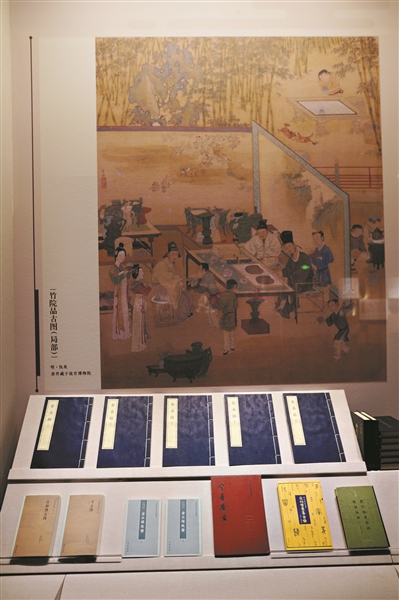
Chinese version exhibit Guangzhou Daily All -Media reporter Wang Wei Xuan Photo
Nearly 300 versions presentation
Chinese version of thousands of years of development history
As one of the four permanent exhibitions, the exhibition of "Qianqiu Writing Printing Huaxia -Chinese Version Overview" is located in the exhibition hall on the first floor of the Wenqin Pavilion of the Guangzhou National Version. The exhibition area is based on the concept of "Crossing the Metamorphosis of thousands of years", and extracts the representative Chinese version form as elements. From oracle, bamboo, paper, and diverse digital media, the whole process and panoramic style present a picture The vivid Chinese version of the development of an overview map.
According to reports, the exhibition of the "Chinese Edition Overview" exhibition of the Guangzhou National Edition has selected the classic Chinese history of Chinese history. The image vividly explains the concept of the version, shows the development history of the Chinese version, and shows the value of cultural heritage, sustainability of civilization, and national rejuvenation. Essence The organizer hopes that through the exhibition, the audience can understand what the Chinese version is and what form of evolution, and deeply feel the splendid civilization carried by the Chinese version, establish national self -confidence, and inherit Chinese civilization.
This exhibition is divided into four parts, showing the evolution and cultural connotation of the Chinese version for thousands of years through nearly 300 versions of exhibits. Walking on the exhibition hall, the Chinese version is broad and profound. Starting from the first part of the "engraved text", the version of the early form of "text" as the starting point, recorded and showed the prototype of the Chinese version -the Oracle text, which is more than 3,000 years ago, is already more mature The Chinese character system also marks the formal formation of the Chinese version that can be read.
Time to witness history, accompanied by the changes and development of writing materials, as well as the evolution of fonts such as script, Lishu, and regular script, the form of the Chinese version is gradually enriching, and the colorful Chinese civilization grows from sprouts and even leaves. Mao.
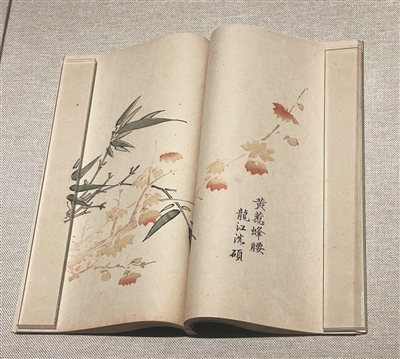
Hu Zhengyan hosted the "Shizhuzhai Calligraphy and Calligraphy Book", which creatively uses the 饾 version and arch flower printing skills, which can be called the epoch -making work in the history of printing and version history.
multimedia technology
Let the Chinese version "live"
The exhibition uses multimedia and the Internet of Things technology to provide immersive, scenario -style collection information display. Entering the exhibition hall, you can immediately experience the first multimedia exhibition item "handed down". The exhibition items are combined with relief and projection to show the development of the early form of the version. The concept of "handed down" is based on the idea of ancient Chinese Tianyuan places, designing the starry sky dome, and the display version was born on the land under the land of China; with the concept of "Long River", setting up a vertically winding art device, among which the embedded in turn is embedded in order Each version of each period reflects the characteristics of the early version inscriptions.
In the core exhibition item in the second part of the exhibition hall, "Chengyang" and "handed down". Set the LED matrix on the ground, presenting seals, inscriptions, carvings, and living characters through matrix movement; linking with imitation paper curls, playing the corresponding printing images, reflecting the importance of the development and changes of printing to spreading culture.
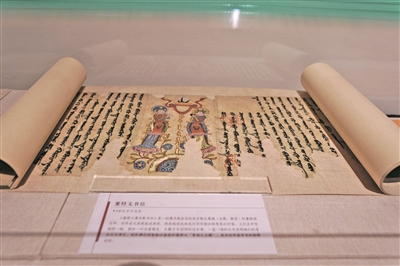
Sogdic Book Letter
The "Yaji Tu" exhibition aims to create an antique book collection space, and build the doors and windows -shaped LED screen exhibition items in the middle of the space, and dynamically interpret the Ming Dynasty painter Xie Huan "Xiangshan Nine Lao Maps". It is understood that the literati collection is a literary form with Chinese cultural characteristics. Most of the masterpieces of traditional Chinese poetry, calligraphy and calligraphy are the products of the literati collection. The paintings of the paintings slowly expanded on the LED screen, and the original static picture was angry. At the same time, a variety of version decoration forms appear in the screen, allowing the audience to see the various decoration forms of the Chinese book version.
In the "Chinese Version" sector, 3D and somatosensory interactive technology are combined to create the Chinese version of Duobao Pavilion, and vividly show various versions of the Chinese and foreign Chinese civilization marks. The flow on the screen presents the three -dimensional form of various types of Chinese version resources. When the audience approaches, you can select various versions through gestures and view details.
Tour Chinese version
Guangdong key version
Western Han Dynasty South Vietnam Guobian
The Western Han Dynasty, known as the "Lingnan First Jane", is a notepad of the South Vietnamese Palace. This batch of Mujian is located in the well in the Western Han Dynasty Palace of the Western Han Dynasty. The number of texts is more than 1,000. The content involves albums and legal documents. It is a notepad file for the South Vietnamese Palace. It is a precious version of the history and culture of South Vietnam. Western Han Dynasty South Vietnam Guobian
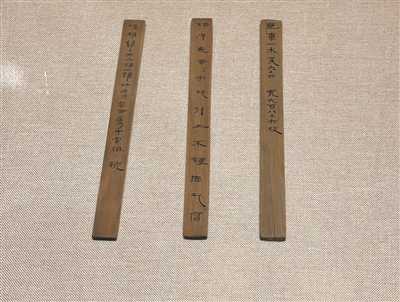
"The Stele of the Song New Cultivation of Guangli King" pioneer
The Song Dynasty first established a maritime trade management agency in Guangzhou, the city shipping department, and appointed officials in charge. It has important historical value.
Edition print book in Guangdong
With the most famous of the Luo Han Mo Garden, the most visible cloaks are the most. The six -color seal of Han Mo Garden is the most printed book in the history of Chinese carved printing. The text is printed in ink color. Version value and cultural relics value.
Hanmo Garden's six -color set of "Du Industry Collection"

Text carved stone
The text carved stone has a long history in our country. Later generations of stone carved texts are diverse, including stone drums, monuments, 碣, cliffs, etc. Among them, the form of monuments is mostly. The huge number of stone inscriptions can not only reflect the evolution process of Chinese characters, but also a form that continues to this day in the early Chinese version. In addition, stone carvings are often presented in the form of chapters, which has a more direct enlightenment role for the carving printing version of later generations.
rubbing
The pioneering print is the skill of copying the text on the hard surface with a dye to the paper. As a copy of text and images, the printing and carving printing technology are also very similar. It inspires people, as long as the positive concave characters are changed to reverse convex characters, it becomes carved printing. It should not be later than the Northern and Southern Dynasties. The earliest applied to the inscriptions of the inscriptions, and later developed to the text and graphics that can be printed on all the bumps, and it has been applied to this day. The pioneer -the pioneer has also become a unique category in the Chinese version.
Color printing
The colored printing refers to two or more colors of a book or a page of books, which are mostly black and red. my country's nationwide printed technology has a long history. The earliest used for printing cloth. The banknotes of the Northern Song Dynasty used colored printing. After the Song Dynasty, the pumping technology gradually applied in book printing. By the Ming Dynasty, the multi -color covering technology of books reached its peak, and there was a short version of color printing and colorless printing from shallow and deep, from light to thick.
What is the Chinese version?
The Chinese version refers to the various types of carriers and technical processes that have various carriers and their production, production, dissemination, and application of various types of carriers and their production, production, dissemination, and application of ancient and modern Chinese and foreign. There are various forms such as various pictures, extensions, manuscripts, manuscripts, manuscripts, and prints, including ten types.
Text/Guangzhou Daily · Xinhua City Reporter: Huang Lan Tu/Guangzhou Daily · Xinhua City Reporter: Huang Lan (except signed) Video/Guangzhou Daily · Xinhua City Reporter: Gao Kaiyu, Wang Anlei Guangzhou Daily · Xinhua City Editor: Wu Yizheng
- END -
Times Reading: Section of Shifang Elementary School in the fourth grade (Feng Siyan, Liu Ziyi, Mao Yan)
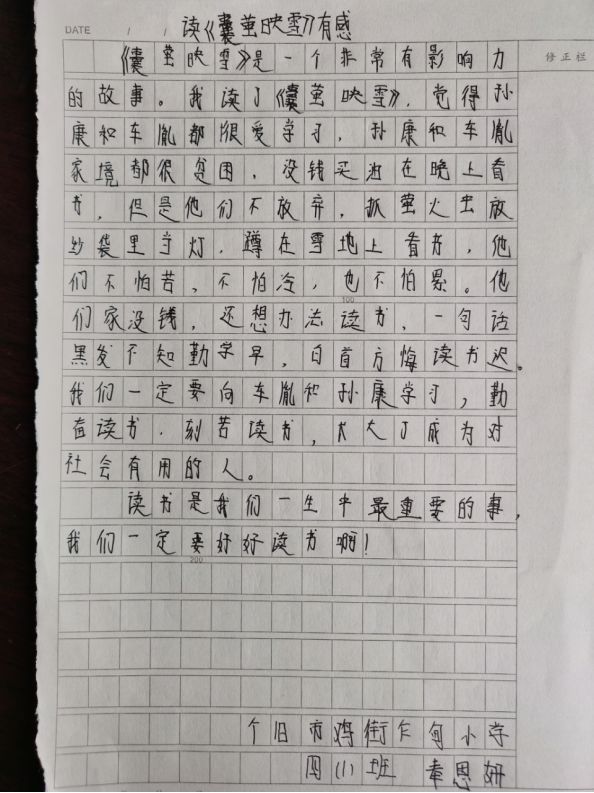
Reading Book Title: Capyard Falling SnowReader: Feng SiyanInstructor: Peng LiuyinS...
[CC forum] Huagong: Using diverse images, telling China's "The Romance of the Three Kingdoms"

Hua Rong, the top ten photographers across the country, said that society is const...